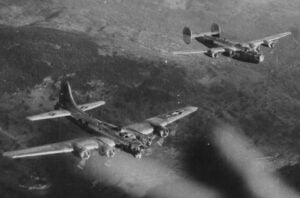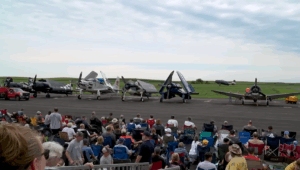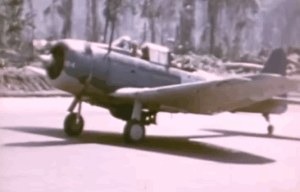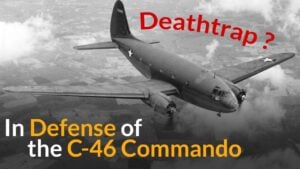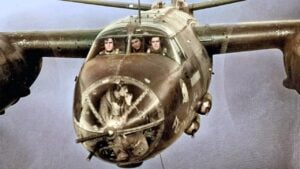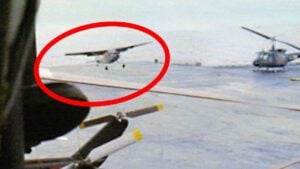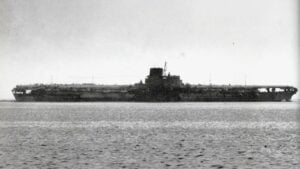The 8 Least Effective Non-Fighter Planes of WW2

The Antique Airshow / YouTube
World War II saw rapid advancements in aircraft technology, with nations racing to outpace each other in air superiority. While many planes excelled, others fell notoriously short of expectations due to design flaws or outdated technology. This roundup explores eight of the least effective non-fighter aircraft used during the conflict, highlighting their operational challenges and why they failed to make an impact.
8. Blackburn Botha
View this post on Instagram
The Blackburn Botha ranks high on the list due to its design shortcomings. It entered service in 1939 only to be replaced by older models within 18 months due to numerous operational failings. The Botha was intended for reconnaissance and torpedo bombing but was hampered by a cramped and poorly designed cockpit offering limited visibility. Its slow speed of just 249 mph compounded its problems, making it cumbersome and difficult to maneuver. The unstable airframe led to several tragic crashes, relegating the Botha to a short and ineffective service life.
7. Fairey Battle
View this post on Instagram
Introduced in the late 1930s, the Fairey Battle became quickly outdated by the time World War II began. Powered by a single 1,030 horsepower Rolls Royce Merlin engine, it struggled with the bulk of its large airframe, achieving a maximum speed of only 241 mph. Primarily used during the Battle of France, its underpowered engine failed to provide the necessary speed to evade enemy fire, resulting in the aircraft being repurposed as a trainer by 1940. Despite its designation, nearly 100 Fairey Battles were lost within a single week of wartime operations in 1940.
6. Douglas TBD Devastator
View this post on Instagram
Once considered among the world’s best torpedo bombers, the Douglas TBD Devastator was already outclassed by the time of the Pearl Harbor attack in 1941. With a maximum speed of 206 mph, which dropped to 115 mph during torpedo runs, it was painfully slow and poorly defended. Its last significant engagement was during the Battle of Midway in 1942, where most of the deployed aircraft failed to return. The surviving Devastators were promptly retired from service thereafter.
5. Heinkel He-177 Greif
The only long-range heavy bomber developed by Germany during the war, the Heinkel He-177 Greif, was plagued by engineering issues from the start. The ambitious design aimed to fulfill the Air Ministry’s 1938 requirement for a dive-bombing heavy bomber, leading to unconventional and problematic features like coupling two engines to each propeller. This resulted in overheating problems that were evident from its first 12-minute flight and persisted throughout its service, with engines frequently catching fire. Despite these flaws, over 1,000 units were produced by the time production ceased in 1944.
4. Saunders-Roe A.36 Lerwick
The Saunders-Roe A.36 Lerwick was a British flying boat intended to complement the Royal Air Force Coastal Command. However, its service was marred by a high accident rate, with 10 of the 21 produced aircraft lost to crashes. Originally set to replace older models, the Lerwick was pulled from routine service within months, relegated to use in operational training, and finally scrapped early in 1943.
3. Brewster SB2A Buccaneer
Designed for the US Navy, the Brewster SB2A Buccaneer also served with the US Marine Corps, Royal Air Force, and other international forces. Despite widespread orders, its performance was underwhelming, leading many to be scrapped before they could be deployed. Its inadequate power and poor construction rendered it ineffective in combat, with most survivors relegated to secondary roles such as target towing and training.
2. LWS-6 Żubr / PZL.30 Zubr
View this post on Instagram
The LWS-6 Żubr was a Polish medium bomber that saw limited production due to fundamental design flaws and a woeful track record, including a prototype crash that killed its crew. Difficult to fly and lacking sufficient firepower, these aircraft were rapidly dispatched by German forces during the invasion of Poland in 1939. Only a few were ever produced, given their evident limitations.
1. Breda BA.88 Lince
The Italian Breda BA.88 Lince takes the unfortunate title of the least effective plane of World War II. Initially promising as a prototype, its operational performance drastically declined after additional equipment overloaded its frame, making it too heavy for effective combat use. Following dismal results in France in 1940, the remaining planes were repurposed as decoys on airfields, never fulfilling their intended combat roles.














